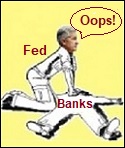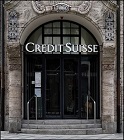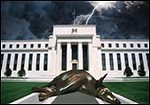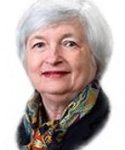-
Recent Posts
- Trump’s “Big Beautiful Bill” Is a Grotesque Giveaway to Fossil Fuel Billionaires While Adding $3.3 Trillion to Nation’s Debt
- Senator Chris Murphy Charges that Trump “Has Opened a Channel for Bribery”
- Congressman Casten: Trump’s Assault on the Rule of Law Is Causing Capital Flight Out of U.S. by Foreign Investors
- Trump’s Approval Rating Drops to 80-Year Low; IMF Says U.S. Tariffs Now Exceed the Highs During the Great Depression
- Nasdaq Has Lost More than 3,000 Points Since Trump’s First Full Day in Office in 2025; the Pain Has Barely Begun
- The Bond Crisis Last Week Was a Global No-Confidence Vote in U. S. President Donald Trump
- Trump’s Tariff Plan Guts $5 Trillion in Stock Value in Two Days; Senator Warren Calls for Emergency Action Before Markets Open on Monday
- Trump’s Attacks on Big Law, Universities, and the Media Have a Common Goal: Silence Dissent Against Authoritarian Rule
- Trump Administration Gives All Clear to Laundering Money through Shell Companies and Bribing Foreign Officials
- Four Megabanks on Wall Street Hold $3.2 Trillion in Uninsured Deposits – Which May Explain Senator Schumer’s Pivot to the GOP to Stop a Government Shutdown
- Here’s What Came Crashing Down Yesterday for Trump’s “Genius” Guy, Elon Musk: Tesla Stock, Access to Twitter (X), His Years of Secret Calls with Putin
- After Banning the Associated Press, Trump Is Now Targeting Specific Journalists That He Wants to See Fired
- Closely Watched Atlanta Fed Model Predicts Negative U.S. Growth in First Quarter
- Trump’s Gangster Diplomacy Makes Front Page Headlines Around the Globe
- Who Benefits Alongside Elon Musk If He Succeeds in Killing the CFPB: the Megabanks on Wall Street that Underwrite His Tesla Stock Offerings
- In Trump 1.0, the State Department Used Taxpayer Money to Publish a Book Elevating Elon Musk to a Superhero; It Was Funded by USAID, the Agency Musk Wants to Quickly Shut Down
- News Host Joy Reid Raises Threat of Trump Selling U.S. to Putin; Ten Days Later Her Show Is Cancelled
- Elon Musk’s DOGE Appears to Be Violating a Court Order; It Has Taken Down Hundreds of YouTube Videos that Educate Americans on How to Avoid Being Swindled
- Barron’s Releases Audio of Jamie Dimon Cursing Out His Workers at a Town Hall, as Dimon Plans to Dump Another One Million JPM Shares
- There’s One Federal Investigative Agency that Neither Trump nor Elon Musk Can Touch: It Just Opened an Investigation into DOGE
- Elon Musk’s Companies Were Under Investigation by Five Inspectors General When the Trump Administration Fired Them and Made Musk the Investigator
- Donald Trump Gives the Greenlight to Goldman Sachs and JPMorgan Chase to Return to Bribing Foreign Officials
- After Tech Geeks Built a Back Door to Loot Billions from FTX, Republicans Refuse to Investigate What Elon Musk’s Tech-Squad Did Inside the U.S. Treasury’s Payment System
- Former Prosecutor, Now U.S. Senator, Informs Tesla That CEO Musk May Be Violating Federal Law and to “Preserve All Records”
- Trump’s Hedge Fund Guy Is Now Overseeing the U.S. Treasury, IRS, OCC, U.S. Mint, FinCEN, F-SOC, and the Consumer Financial Protection Bureau
- As Elon Musk Begins Shutting Down Payments to Federal Contractors, a Strange Money Trail Emerges to His Operatives Inside the U.S. Treasury’s Payment System
- JPMorgan Chase Charged by Yet Another Internal Whistleblower with Cooking the Books
- We Asked Google’s AI Search Model, Gemini, Questions About the Fed and Wall Street Megabanks: It Got the Answers Dead Wrong
- With Trump and Melania’s Crypto Coins Likely to Raise Legal Challenges, Why Didn’t Trump Fire the SEC’s Inspector General in His Purge of IGs?
- Fossil Fuel Industry Could End Up Paying Tens of Billions for LA Wildfires and Deceiving the Public on Climate Change for Decades
- It’s Being Called the Biggest Grift by a President in U.S. History: Trump and First Lady Launch their Own Crypto Coins
- Trump Plans to Install a Fracking CEO to Head the Energy Department and Declare a National Emergency on Energy to Gain Vast Powers
- Fossil Fuel Money Played a Role in the Los Angeles Fires and the Push to Install Pete Hegseth as Secretary of Defense
- When It Comes to Wealth Retention in Retirement, Concrete May Be the New Gold
- Wall Street Watchdog Warns “Clock Is Ticking on a Coming Catastrophic Financial Crash”
- Wall Street Is Sending the Same Message to Americans on Fossil Fuel Financing that It Sent on Cigarettes: Drop Dead
- In a Six-Week Span, this Dark Pool with a Curious Past Traded 3.7 Billion Shares
- Wall Street’s Lobby Firm Hired Eugene Scalia of Gibson Dunn to Sue the Fed for Jamie Dimon
- Postmaster General Louis DeJoy Made $561,051 in Compensation in 2024, as Mail Costs Spiked and Delivery Deteriorated
- Fed Chair Jay Powell Sends a Bold Message to Trump and Tanks the Dow by 1123 Points
- The Head of Fixed Income at T. Rowe Price Makes the Scary Case for the 10-Year Treasury to Spike to 6 Percent
- $663 Billion in Cash Assets Have Gone Poof at the Largest U.S. Banks
- Donald Trump to Ring Bell at New York Stock Exchange Today as Hit List Posters Appear in Manhattan Targeting Wall Street CEOs
- Trump Has a Slush Fund to Prop Up the Dollar – Will He Use It to Prop Up Bitcoin Instead?
- A CEO Assassination; a Billionaire Heiress/NYPD Commissioner; a Secret Wall Street Spy Center – Here’s How They’re Connected
- Despite More than 1600 Tech Scientists Signing a Letter Calling Crypto a Sham, Trump Names a Crypto Cheerleader for SEC Chair
- The Fed Rings a Warning Bell: Hedge Funds and Life Insurers Are Reporting Historic Leverage
- Trump’s Nominee for FBI Director, Kash Patel, Has Businesses Financially Intertwined with Trump
- Donald Trump Is at Risk of Getting Named in a Fossil Fuels Conspiracy Lawsuit
- Trump Is Having Difficulty Getting a Lawyer to Accept the Nomination for SEC Chair: Here’s Why
Search Results for: stress test
The Fed Pretends to Send a Warning to Wall Street’s Mega Banks on Derivatives and Counterparty Risk

By Pam Martens and Russ Martens: February 29, 2024 ~ On Tuesday, the Vice Chair for Supervision at the Federal Reserve, Michael Barr, delivered a speech at a risk management conference in Manhattan. Barr’s objective was to convince conference attendees that the Fed has its eye on the ball when it comes to Wall Street mega banks and their counterparties who are sitting on the opposite sides of derivative trades totaling tens of trillions of dollars. (Yes, trillions.) The most illuminating and dangerous elements of Barr’s speech are what he didn’t say. To remind attendees of what could happen if counterparty risks were not managed properly, Barr cited Long Term Capital Management (LTCM) and Archegos Capital Management. LTCM was a hedge fund stocked with the so-called “smartest men in the room,” including two Nobel laureates, who fed mathematical formulas into computers that generated trades using astronomical levels of leverage. Of course, this … Continue reading
The Battle Over Capital at the Mega Banks Must Expand to Breaking Them Up

By Pam Martens and Russ Martens: January 25, 2024 ~ Last Thursday, 12 Democrats in the U.S. Senate sent a deeply insightful letter on a subject most Americans have never discussed around their kitchen table: adequate capital levels at the Wall Street mega banks that came close to bringing down the U.S. financial system in 2008. Before that financial crisis was over – the worst since the Great Depression of the 1930s – millions of hardworking Americans had lost their jobs and millions more had their homes taken in foreclosure. If the U.S. is going to avoid a replay of that crisis, Americans are going to have to start having these critical conversations about the structure of Wall Street mega banks around the kitchen table. Americans are going to have to start engaging in the battle to shape the future of American democracy and more equitable wealth distribution, which requires dramatic reform … Continue reading
Gallup Poll: Confidence in U.S. Banks Stood at 60 Percent in 1979. Today, It Stands at 26 Percent.

By Pam Martens and Russ Martens: July 11, 2023 ~ The polling organization, Gallup, conducted a survey between June 1-22 to update its annual poll that measures the confidence that Americans have in key U.S. institutions. Banks, as might be expected, continued their downward trend, registering an abysmal 26 percent of Americans who have “a great deal” or “fair amount” of confidence in the banks. That confidence ranking stood at 27 percent last year and at 33 percent in 2021. It is actually somewhat baffling that confidence in banks only dropped by one percentage point from last year, given that the second, third and fourth largest bank failures in U.S. history occurred in the first half of this year. Measured against a longer time horizon, confidence in U.S. banks looks far worse. In 1979, the Gallup poll showed 60 percent of Americans had confidence in the banks. In the years prior … Continue reading
IMF Says Fed Will Have to Remain Tight at 5 ¼ to 5 ½ Rate Until Late 2024; Warns of “Unpredictable Consequences” to Banks

By Pam Martens and Russ Martens: May 31, 2023 ~ Last Friday, at the start of Memorial Day weekend, researchers at the International Monetary Fund (IMF) released an analysis of where they think the U.S. economy is headed and the headwinds (read gale force winds) that can, potentially, be expected along the way. Folks on Wall Street who were hoping that the Fed was at the end of its rate-hiking cycle, with a more dovish Fed juicing stock market returns later this year, likely had their holiday weekend ruined with this projection from the IMF: “Achieving a sustained disinflation will necessitate a loosening of labor market conditions that, so far, has not been evident in the data. To bring inflation firmly back to target will require an extended period of tight monetary policy, with the federal funds rate remaining at 5¼–5½ percent until late in 2024.” The Fed’s inflation target is … Continue reading
UBS Was Quietly Bailed Out in 2008; Now It’s Getting a $173 Billion Backstop to Buy Credit Suisse at 82 Cents a Share

By Pam Martens and Russ Martens: March 20, 2023 ~ Yesterday, the Swiss banking giant, UBS, agreed to a shotgun wedding with its collapsing long-time Swiss rival, Credit Suisse. Switzerland has committed $173 billion in loans and guarantees to the combined firm. A key player in this deal was the central bank of Switzerland, the Swiss National Bank. That’s the very same central bank that had quietly bailed out UBS during the financial crisis of 2008 with the assistance of dollar swap lines from the Federal Reserve (the “Fed”) – the central bank of the U.S. Yesterday, the Fed announced the return of those emergency dollar swap lines as the shotgun wedding of UBS and Credit Suisse failed to quell a spreading banking panic. The way this UBS bailout went down in 2008 was illuminated in the audit of the Fed’s emergency bailout facilities from December 2007 to July 2010 that was … Continue reading
Moody’s Downgrades Entire U.S. Banking System; Credit Suisse Plummets. Welcome to Banking Crisis 3.0

By Pam Martens and Russ Martens: March 15, 2023 ~ The “Related Articles” linked below (a tiny sampling of relevant articles) will remind our readers just how long and in how many different ways we have been attempting to warn that the U.S. banking system was incompetently structured and at risk of systemic contagion. We have also repeatedly warned that the crony, captured Fed was the worst possible banking supervisor and should be stripped of its bank regulatory powers and restricted to setting monetary policy. We have repeatedly cautioned, citing experts in the field, that the Fed’s stress tests were little more than a placebo and would not prevent the next banking crisis. (Check out our numerous articles at this link. Scroll down.) On July 29 of last year we wrote that Wall Street Megabanks’ Multi-Billion Dollar Blunders Suggest Money Controls as Good as George Bailey’s Uncle Billy and summed up … Continue reading
Secretary Yellen, We’ve Got a “Staggering” Problem: New Report Shows Foreign Banks Have Secret Derivative Debt that Is “10 Times their Capital”

By Pam Martens and Russ Martens: December 6, 2022 ~ U.S. Treasury Secretary Janet Yellen has the dual role of Chairing the Financial Stability Oversight Council (F-SOC), whose role is to provide “comprehensive monitoring of the stability of our nation’s financial system.” Heads of each of the federal agencies that supervise Wall Street and the mega banks sit in on meetings of F-SOC. One would think that such an august body would have a handle on “staggering” threats to the U.S. financial system – especially since F-SOC was created under the 2010 Dodd-Frank financial reform legislation to prevent a replay of the off-balance sheet derivatives that crashed the U.S. economy in 2008 and forced an unprecedented and secret bailout of U.S. and foreign global banks by the Federal Reserve to the tune of $29 trillion. If Yellen is aware of the latest threat to financial stability, she’s not sharing the details … Continue reading
This Time Will Be Different: One or More Corporations Will Blow Up from Derivatives along with Global Banks

By Pam Martens and Russ Martens: October 19, 2022 ~ Today, we will be asking the Senate Banking Committee, its Chair, Senator Sherrod Brown, and one of its most knowledgeable members, Senator Elizabeth Warren, to call an emergency hearing and subpoena the testimony of two brilliant researchers for the Office of Financial Research. Those researchers are Andrew Ellul and Dasol Kim. The men have done nothing wrong. In fact, they have done something courageous. They have effectively blown the whistle on how global Wall Street banks have, once again, endangered the stability of the U.S. financial system through their opaque and dangerous use of over-the-counter derivatives. Unfortunately, because of the legions of lobbyists employed by Wall Street that shape and corrupt the rules of federal bank regulators, these men are prevented from revealing the names of the most dangerous banks and their most dangerous counterparties because that information is considered restricted … Continue reading
Goldman Sachs and Morgan Stanley Have Mysteriously Disappeared from this Week’s Senate and House Banking Hearings

By Pam Martens and Russ Martens: September 20, 2022 ~ There are eight Global Systemically Important Banks (G-SIBS) in the U.S. They are: JPMorgan Chase, Citigroup, Bank of America, Goldman Sachs, Bank of New York Mellon, Morgan Stanley, State Street and Wells Fargo. These are the banks that pose the greatest risk to the stability of the U.S. financial system and are monitored under the Federal Reserve’s stress tests. Five of those eight banks pose the greatest risk to financial stability because together they hold $200.18 trillion (yes trillion) in notional derivatives (face amount) or 86 percent of all derivatives held by all of the nation’s banks, according to the Office of the Comptroller of the Currency – the federal regulator of national banks. Those banks are: JPMorgan Chase, Citigroup, Goldman Sachs, Morgan Stanley, and Bank of America. In any Senate Banking or House Financial Services Committee hearing that is going … Continue reading
Five U.S. Megabanks Have Lost $300 Billion in Market Cap in One Year; Crypto Is in Meltdown this Morning; and the Fed Will Hike Rates Further on Wednesday

By Pam Martens and Russ Martens: June 13, 2022 ~ Welcome to Monday morning and market hell. As of 8:47 a.m. (ET) this morning, Dow futures are down 553 points; Bitcoin futures have lost 17 percent of their value on the news that cryptocurrency lender, Celsius Network, has frozen withdrawals. The 5-year Treasury note has spiked to yield 3.38 percent, a 50-basis point increase in a month, leading to an inverted yield curve against the 10-year Treasury note, which is trading at 9:01 a.m. (ET) this morning at a yield of 3.27 percent. (An inversion signals a rising recession risk.) All of this comes as the Fed has signaled that it will announce another interest rate hike this Wednesday, following the two-day meeting of its Federal Open Market Committee (FOMC). Stocks are developing a habit of tanking one day after Fed Chair Jerome Powell holds his FOMC Wednesday afternoon press conference, … Continue reading

